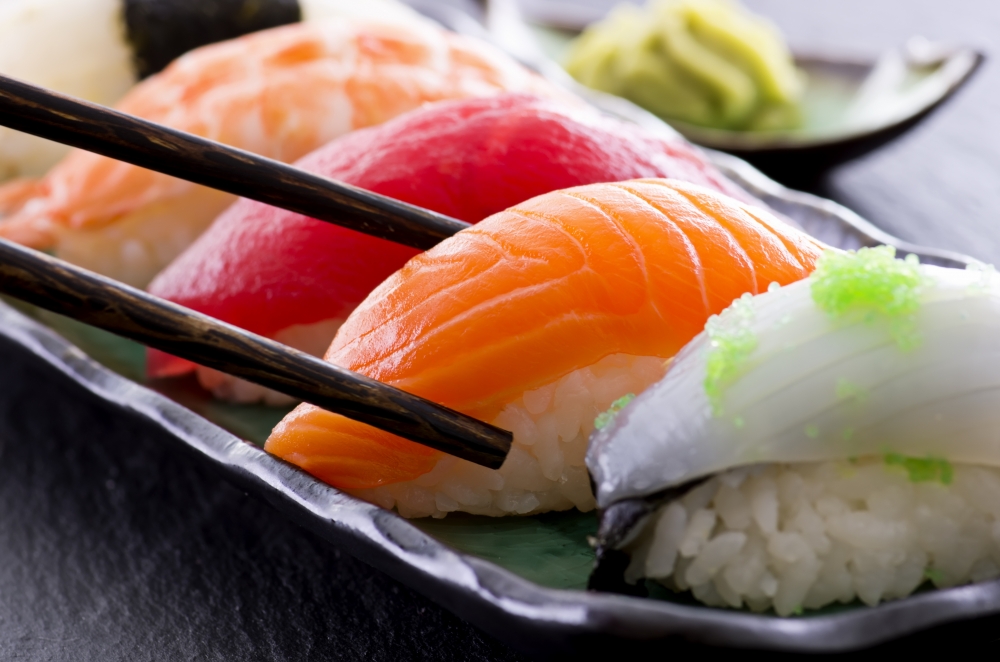
A Not-So-Fine Kettle of Fish

That spicy tuna roll you order at your favorite sushi restaurant may not be tuna at all. And the yellowtail? It could be something else entirely. In fact, according to a new study, as much as half of nine types of fish sold in Los Angeles-area sushi restaurants may be mislabeled, despite tougher laws and increased media scrutiny in recent years.
The marine scientists from UC Santa Barbara’s National Center for Ecological Analysis and Synthesis (NCEAS), UCLA, Loyola Marymount University and UC Santa Cruz used DNA markers to identify seafood mislabeling over a four-year period at 26 restaurants and three high-end grocery stores in the greater Los Angeles area. Their findings appear in the journal Conservation Biology.
“The results of this study raise new questions about the efficacy of efforts intended to stem seafood fraud,” said co-author Samantha Cheng, a postdoctoral fellow at NCEAS who conducted the research as part of her graduate studies at UCLA. “Time and again, we found one variety or even an entirely different species to be labeled as a different, more commonly known or popular fish.”
The researchers took a novel approach to examining seafood fraud, enlisting the help of nearly 300 undergraduate students at UCLA as part of a marine biology course. The team targeted popular fish used for sushi, including red snapper, yellowtail, halibut, mackerel, salmon and four varieties of tuna: albacore, yellowfin, bigeye and bluefin. Between 2012 and 2015, students ordered these fish at restaurants or purchased sushi-grade specimens from grocers and took samples back to the labs for DNA analysis.
The investigators found that all of the restaurants served at least one mislabeled fish and that all fish types were mislabeled at least once, with the exception of bluefin tuna. Surprisingly, all menu items sold as red snapper or halibut were in reality a different fish. Mislabeling was slightly lower at the high-end grocery stores (42 percent) than at sushi restaurants (47 percent).
The names of fish caught in foreign countries may be lost in translation or mislabeling may occur in the country of origin, so Cheng emphasizes the importance of consumer awareness. She encourages people to ask questions about where the fish comes from and what the specific species is.
According to Cheng, mislabeling can significantly impact public health. In 2007, pufferfish sold as monkfish led to hospitalization of consumers in three states. “Finding that nearly a third of the halibut sushi examined were in fact olive flounder, a species that has caused rampant outbreaks of parasitic infections in Japan, is very concerning,” she explained.
In the paper, the researchers’ recommendations for curbing possible seafood mislabeling — which include increasing enforcement as well as the monitoring capacity of seafood inspectors — call for international and federal policies that strengthen traceability in seafood products.
Some efforts have been undertaken. On Dec. 8, 2016, the federal government released new seafood labeling and fish trade requirements. And the Obama administration on Jan. 9, 2017, issued new rules aimed at preventing unverifiable seafood from entering the U.S. market. Under the Seafood Import Monitoring Program, importers will be required to report information and maintain records about the harvest and chain of custody of fish.
“These are important first steps,” Cheng said. “But much more needs to be done to increase advocacy, detection and enforcement to prevent seafood fraud. The public deserves to know what they are eating. Particularly as sustainable foods are becoming more mainstream, consumers need to know whether their choices are adding pressure to already overharvested fisheries.”



